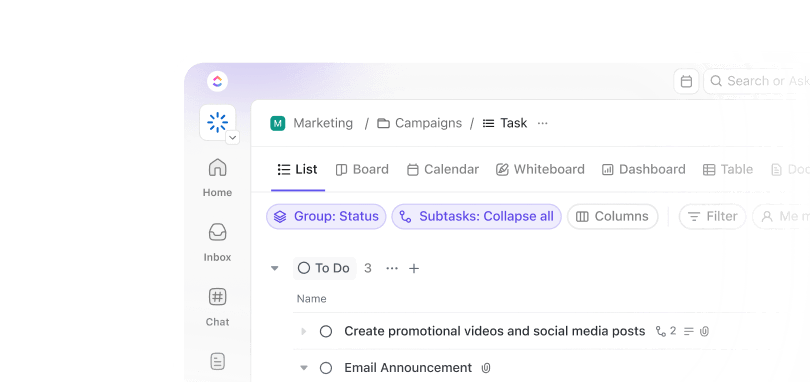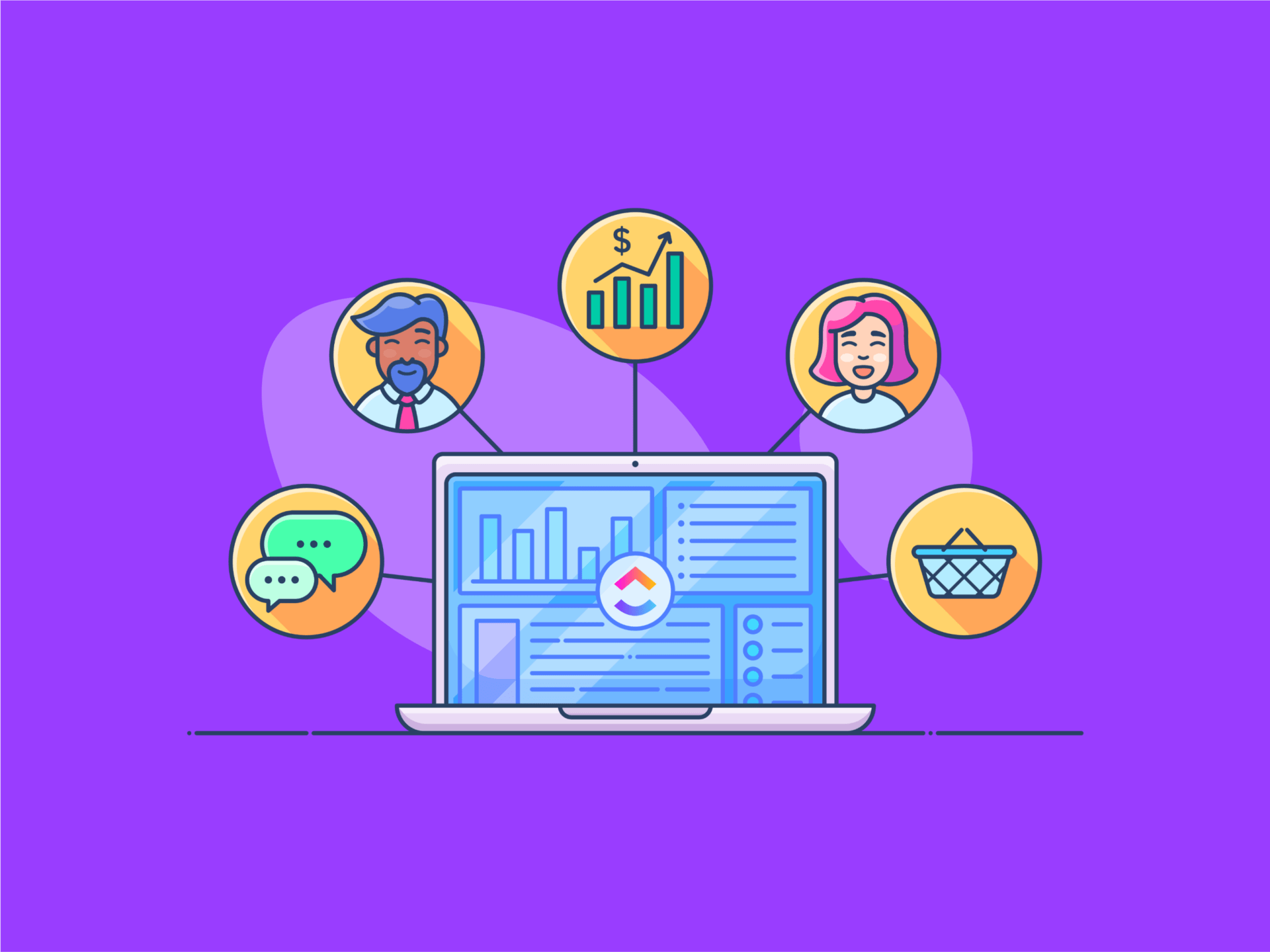Staying positive at work isn’t as easy as motivational posters make it seem. Deadlines pile up, stress kicks in, and before you know it—your self-belief is shaken.
The truth is: Positivity isn’t something you’re born with, but a skill you can learn and refine.
Think of yourself as a sunflower. Sunflowers instinctively grow toward the sunlight, soaking up all the good vibes (and vitamin D) they can find.
Similarly, having a positive mindset means nudging yourself toward brighter thoughts and hopeful attitudes, even when things don’t exactly feel that way.
But to remain positive isn’t solely your job. A lot rides on factors like employee recognition, team feedback, and management’s approach to workplace culture (it is much more than just motivational quotes).
Your role? Contribute to the positive work environment and inspire those around you to see the glass half full and not half empty. In this article, we will go through some awesome tips on how you can stay more positive at work.
⏰ 60-Second Summary
- Start your day right: Build a morning routine and practice mindfulness
- Focus on gratitude: Keep a journal or acknowledge achievements daily
- Build supportive relationships: Foster workplace friendships and network positively
- Manage stress effectively: Prioritize tasks, delegate, and practice relaxation techniques
- Leverage technology: Use tools like to track goals, collaborate, and stay organized
- Encourage team positivity: Recognize contributions and reward positive behaviors
- Handle challenges smartly: Address negativity, set boundaries, and maintain a positive outlook
- Lead with positivity: Inspire and support others with a growth mindset
- Cultivate company culture: Promote inclusion, transparency, and open communication
- Engage your team: Implement fun and interactive team-building activities
How to Stay Positive at Work: Boost Productivity & Morale
The Importance of Positivity at Work
I think we can all agree that:
✨ happy professionals = better productivity = more contributions and growth ✨
Good, because science backs it up. Studies show that companies with a positive work environment and healthier workplace culture can increase their revenue by up to 4x.
But before we get too sunny, let’s talk about the big bad wolf lurking in every office: burnout.
🧠 Did You Know: According to a recent Gallup poll, only 31% of employees are “engaged” at work. Meanwhile, 45% of 1,405 U.S. employees surveyed admitted feeling “emotionally drained” by their job.
Most people have the misconception that being positive means putting on a brave face and bulldozing through every challenge.
No, instead—it’s about cultivating a positive mindset that prioritizes balance. It’s knowing when to focus on your work and when to hit pause to recharge.
So yes, positivity boosts mental health, improves team morale, and even betters your job performance. But it reminds you to breathe, recalibrate, and keep moving forward—without the emotional toll.
Practical Tips to Stay Positive at Work
Every time you take a deep breath, your right foot twitches. Did you try it out? Did we successfully trick you? Gotcha! 😊
Sorry about the prank, but deep breathing exercises can work wonders for relaxation—which is very important for staying positive. Here are some practical tips you can use to stay positive at work:
Start your day right: morning routines and mindfulness practices
Are you a morning person or do you need a gallon of coffee before speaking to another human? Either way, staying positive isn’t about reinventing who you are—it’s about setting yourself up to feel good.
And one proven way to boost your mood is to develop a morning routine that fits you.
Maybe you like doing yoga or going for a run, or perhaps you love indulging in a delicious breakfast.
You can also listen to your favorite music—essentially, starting the day with things that lift your mood can set the tone for the hours ahead. Small wins matter, like giving your loved ones an extra hug.
🌟 Fun Fact: 60%-80% of us check our phones within five minutes of waking up. But research says it’s bad. Starting your day with a scroll fest can spike stress and anxiety, thanks to a flood of notifications, news, and social media. Instead, try swapping the doom-scroll for mindfulness practices like deep breathing.
Focus on gratitude: keeping a journal or recognizing achievements
Thanksgiving is a universal happiness booster, right? Think about it, what do you do on the day: evaluate what you have and be grateful for it, spread kindness, and feast.
Okay, perhaps a daily feast is asking too much, but if that’s the power of being thankful one day of the year, imagine what you could accomplish by being thankful every single day.
Here’s where you can start with your gratitude journey: Get a gratitude journal. Jot down three things you’re thankful for daily—whether it’s crushing a work task or enjoying a great meal.
These small moments of appreciation can inspire you to focus on positive aspects over time.
🎗️Remember: Gratitude is contagious. Express thanks out loud—like a heartfelt “great job” to a colleague—or sprinkle in random acts of kindness like grabbing an extra coffee for your teammate.
These simple gestures improve workplace culture and boost morale.
Alongside, you can also practice saying daily positive affirmations to enhance your performance at work and achieve an optimistic outlook. positive affirmations
Build supportive relationships: networking and workplace friendships
Remember the saying, “You are the company you keep?”
Well, you better believe it when you’re at work. Surround yourself with positive people, and you’ll feel more upbeat. Stick with toxic personalities, and, well, you might feel like you’re starring in a drama series nobody asked for.
Plus, we all need more friends—50% of people want stronger social connections at work, with some willing to trade salary or career growth for meaningful relationships.
Everybody deserves the best, so how do you find one?
Start by nurturing connections with teammates, especially those you collaborate with regularly. Appreciate their efforts, listen to their ideas, and offer help when needed.
Reciprocity is the magic ingredient here. When support goes both ways, trust grows, and so does job satisfaction.
Manage stress effectively: taking breaks, delegating tasks, and mindfulness
Work stress is no joke. Nearly half of employees report feeling significant stress at work, and if you’re nodding along right now, you’re not alone.
While you can’t control everything (surprise 4 p.m. meetings), there are ways to manage what’s within your reach.
First, let’s address that overwhelming to-do list. Just thinking about how much you need to accomplish can zap your energy before you’ve even begun.
The fix? Take action—start small. Break projects into bite-sized tasks and tackle them one at a time, crossing them off as you go.
You can also stay organized by writing things down.
Another stress-busting trick: Decide how you’ll respond to challenges ahead of time. That nerve-wracking client call or endless meeting?
Treat it as a chance to prove yourself while keeping a positive attitude at work. When you’re in control of your reactions, you’re less likely to let stress take the wheel.
🧠 Did You Know: Not to scare you, but high stress levels can significantly increase the risk of a heart attack—by 2.5 times, according to studies. So, delegate tasks, take regular breaks, and focus on the present moment.
Leverage technology for positivity and personal development
Technology, when used wisely, can transform your personal life and work environment for the better.
Take project management software, for example. It can give you a clear view of your tasks, deadlines, and progress, making it easier to prioritize and even carve out time for new commitments—or some much-needed balance.
is a great tool in that domain. One of its features, Goals, lets you set up professional and personal objectives and track them on a daily basis.
The visual representation of getting closer to your goals will automatically pump you with motivation and push you to be more positive.
Encouraging Positivity in Teams
Teamwork makes the dream work. So, if you want to stay positive at work, your team is the perfect place to start.
Here are some tips:
Role of leadership in fostering a positive workplace
“There is almost no limit to the potential of an organization that recruits good people, raises them up as leaders, and continually develops them,” said John Maxwell—and he wasn’t wrong.
Leadership is the bedrock of a positive work environment, influencing how employees interact, communicate, and feel within an organization.
And what do great leaders do? They create an atmosphere of trust and transparency. They foster open communication and show empathy, ensuring employees feel valued and understood.
The reality: When employees feel seen, job satisfaction skyrockets, and stress takes a backseat.
Which is probably why appreciated employees are 56% less likely to look for a new job.
The role of company culture and HR policies
Well, if you want your workplace to be healthy and think positive, it is time to start treating employees just as well as customers.
A high-performing team culture is built on well-thought-out policies and values that align with both business goals and employee needs. These policies should promote inclusion, diversity, and fairness while ensuring projects are completed to meet stakeholder and customer expectations.
💡 Pro Tip: If you are confused about where to start, here’s a hint: ask your employees. Studies show that 80% of employees who receive meaningful feedback regularly are fully engaged and more satisfied with their job.
Implementing team-building activities
Ever wonder why we made our best friends in school? We played together, laughed together, and occasionally plotted against the dodgeball champion.
Team-building activities at work can rekindle that same spirit. Here are five effective and fun team-building activities to try:
1. Blind Drawing
- Time: 3-4 minutes
- Number of participants: 2 players at a time
- Objective: Boost communication and creativity
🎲 How it works: One participant describes an image (without naming it), while the other draws based on the description. This game reveals how well team members can communicate and interpret ideas—a fun way to highlight strengths and areas for improvement.
2. Scavenger Hunt
- Time: 2-3 hours
- Tools needed: None (except clues)
- Objective: Foster problem-solving and decision-making
🎲 How it works: Take the team to a local museum, park, or even around the office. Set up a series of clues leading to a prize. This activity breaks the monotony and encourages collaboration while keeping things lighthearted.
3. The Great Egg Drop
- Time: 30 minutes to 1 hour
- Tools needed: Assorted office supplies (rubber bands, straws, tape, etc.)
- Objective: Highlight teamwork and resourcefulness
🎲 How it works: Teams design contraptions to protect an egg from cracking during a drop. It’s messy, hilarious, and a great way to see how your team tackles challenges creatively
4. Balloon Questions
- Time: 1 hour
- Tools needed: Balloons, paper, pens
- Objective: Foster connection and openness
🎲 How it works: Team members write questions on paper slips, insert them into balloons, and then pop a random balloon to answer the question inside. It’s a quirky way to learn about each other while keeping the atmosphere relaxed
5. The Perfect Square
- Time: 30 minutes
- Tools needed: Rope, blindfolds
- Objective: Build trust and improve communication
🎲 How it works: Blindfolded participants try to form a perfect square using a rope while relying on verbal guidance from teammates. It’s a fantastic way to reinforce trust and coordination in your team
Recognizing and rewarding positive behaviors
Recognizing and rewarding positive behaviors is all about spotlighting the good stuff your team does and giving them a reason to keep it up.
Here’s a very good example that demonstrates the above.
| 📌 Scenario: Imagine Sarah, a team member, notices a coworker struggling to meet a deadline and offers to help, staying late to ensure everything gets done.
📌 Recognition: Sarah’s manager publicly praises her in a team meeting, specifically mentioning her proactive support and commitment 📌 Reward: The manager gives Sarah a handwritten thank-you note and a $25 coffee gift card as a token of appreciation 📌 Result: Sarah feels valued and motivated to maintain her positive attitude at work. Her actions inspire others to pitch in when needed, creating a more collaborative and supportive workplace culture |
It’s simple: when people feel appreciated, they’re happier, more engaged, and more likely to spread good vibes.
Using tools and resources to support positivity
HR makes the greatest contribution to a positive environment at work while encouraging creative thinking.
And it all starts with a good project management system that fits into the workflow without any trouble.
For instance, Tasks enable the HR to assign responsibilities, set deadlines, and track progress effortlessly.

Whether it’s managing recruitment pipelines or organizing performance reviews, you’ll have a bird’s-eye view of everything in one place.
The best part is that the tasks easily fit into other parts of the workflow, which makes sure that no context is ever lost and everybody is aware of the same goals.
🍪 Bonus: Tasks makes it super easy to delegate tasks and promote team spirit without the need for endless spreadsheets.
If you want a one-stop solution for managing every step of the employee journey, use ’s Employee Engagement Folder Template. It maintains detailed profiles and simplifies onboarding, conducting performance reviews, and running engagement surveys by centralizing HR operations.
While tasks handle a big chunk of conveying important information, communication can’t be compromised.
In fact, prioritizes collaboration with its features, Chat and Docs.


📌 Example: Picture this: your team is rolling out a new employee benefits program. Using ’s Docs, you can collaborate on the policy draft in real time, assign tasks from within the document (like creating a Q&A guide), and gather input via threaded comments, aka Assign Comments.
Team members can communicate directly within tasks, reducing back-and-forth emails and keeping everyone aligned.
Moreover, using Docs, HR teams can create a living document where employees can share concerns, ideas, or suggestions anonymously or openly.
Additionally, Chat takes teamwork to the next level by seamlessly integrating communication with task management. It streamlines task assignment, fostering collaboration and a positive team spirit.


Speaking of feedback, ’s Employee Feedback Template empowers teams to gather and track employee sentiment effortlessly. By visualizing feedback trends over time, this tool helps HR and management address concerns proactively.
Now comes monitoring and tracking your progress. Here, Dashboards can visualize real-time updates on project statuses, individual task progress, and team effort.
📌 Example: An HR leader uses Dashboards to monitor onboarding progress for new hires. They can see who’s completed training, track pending documents, and adjust timelines, making onboarding a seamless experience.
If you want to go a step ahead and measure your productivity beyond the dashboard, ’s Personal Productivity Template is perfect for organizing day-to-day tasks.
It can help you deal with the different items on your plate, be it recruitment, benefits planning, and an upcoming team-building event. The template helps prioritize urgent tasks, set deadlines, and track progress.
’s efficient task management and streamlined communication tools free up time and reduce stress, contributing to a healthier work-life balance.
Overcoming Challenges to Positivity at Work
1. Dealing with stress and high-pressure environments
Work stress can sometimes feel like juggling flaming torches—exhilarating but likely to burn you out. To keep your positive attitude, focus on these key strategies:
- Time management: Prioritize tasks like a pro by identifying what’s most critical. Create a schedule with time blocks and, whenever possible, delegate tasks to lighten the load
- Stress-relief techniques: Take a breather—literally. Deep breathing exercises and mindfulness meditations are proven to reduce stress. Pair this with regular physical activity, like yoga or a quick walk, to help reset your mind
- Maintain a healthy lifestyle: Sleep well, eat nutritious meals, and hydrate. It’s hard to stay positive when you’re running on caffeine
📌 Example: If a project deadline looms, break it into smaller milestones. Celebrate each mini-victory with a quick stretch or a calming playlist. These small actions keep stress at bay while helping you stay productive.
2. How to stay positive at a job you dislike
Let’s be honest—not every job sparks joy. But before you dive into full-blown despair, identify whether you’re dealing with temporary annoyances or long-term dissatisfaction.
- Focus on the positives: Even in a job you dislike, there’s likely something to appreciate—supportive coworkers, flexible hours, or valuable learning opportunities
- Set boundaries: If you’re overwhelmed, learn to say no to excessive assignments. It’s better to excel in a few tasks than drown in too many
- Use your time wisely: Channel your energy into passion projects or skill-building activities that can pave the way to a future role you’ll love
📌 Example: Stuck in a job with unrealistic expectations? Use ’s Personal Productivity Template to track your tasks and visualize progress. It helps maintain focus and creates a sense of accomplishment, even in challenging environments.
3. Methods to handle negativity from coworkers
Negative coworkers can turn the best days into a slog, but there are ways to handle the situation while protecting your positive mindset.
- Directly address the issue: Have a private conversation to express your concerns and see if there’s a root cause you can help with
- Set boundaries: Limit your exposure to negative conversations by changing the topic or politely excusing yourself
- Active listening and constructive feedback: Understand their perspective, but don’t get sucked into the negativity. If appropriate, offer solutions to redirect the discussion positively
- Positive reinforcement: Compliment and encourage their positive actions. Sometimes, a little acknowledgment can go a long way
📌 Example: If a coworker’s constant grumbling disrupts the team’s morale, recognize their good contributions in team meetings. Compliments can shift their focus and build a more optimistic workplace culture.
The Glass is Always Full with
At the risk of sounding cliche, the legendary Audrey Hepburn once said, “Nothing is impossible; the word itself says ‘I’m possible.”
However, this quote is the foundation of positive thinking—in the face of your toughest battles, you don’t give up, and you don’t let those around you give up.
Of course, you’re not alone in this. is there to help you out at every step, from setting up your goals, collaborating with your coworkers in real-time, tracking progress, and even helping you out with reminders and notifications.
Experience the power of unparalleled support by signing up on now!


Everything you need to stay organized and get work done.












